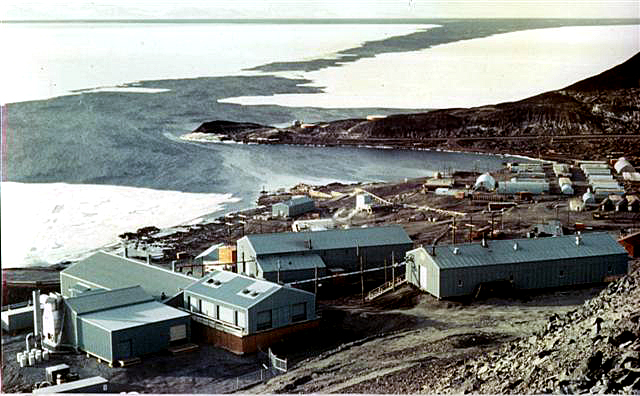Powerful reminderPlaque dedicated to former McMurdo nuclear plant marks significant moment in Antarctic historyPosted June 25, 2010
Historic interest in the world’s coldest continent often focuses on the so-called Heroic Age of Antarctic Exploration or the dawning of the scientific age with the International Geophysical Year (IGY) Earlier this year, a nearly forgotten footnote in Antarctic history got a permanent page in the record books when officials from the National Science Foundation (NSF) Officials from the Department of Energy joined NSF Director Arden Bement Jr. and NSF Office of Polar Programs (OPP) “It is one more way to symbolize the continuing commitment the United States has made to support the complex needs of modern science — both here, and throughout the continent,” Erb said. The plaque will eventually take its rightful place on the side of Observation Hill, where the facility once operated overlooking McMurdo Station from 1962 to 1972. “In that era, and even until today, that was a pretty elegant piece of engineering,” said Philip Smith, who was deputy director of NSF OPP when the Antarctic program decided to work with the military to install the reactor in 1962. Smith and Charles “Chuck” Fegley, a lieutenant in the U.S. Navy’s Civil Engineering Corps who served as officer in charge of the reactor in 1964 and provided support to the plant over several more seasons, were behind the effort to create and install the plaque on Ob Hill. Smith said the two men, who have known each other since the early 1960s, met again a few years ago at a reunion hosted by the Antarctic Deep Freeze Association “Chuck said that all the guys involved in the power plant felt they had been erased from the history book and forgotten,” Smith recalled. The two men set out to make sure that didn’t happen, easily raising the private funds required to cast the bronze plaque and have it shipped down to Antarctica. “There were a lot of people who were ready to make contributions,” Smith said. Noted Fegley: “The response to our campaign to raise money for the plaque from among the approximately 400 men and families — too many are already deceased — was overwhelming.” Sign of the timesToday, the idea of a nuclear power plant in Antarctica might seem antithetical. However, the Antarctic Treaty Smith said the idea of building a power plant on the Ice had some skeptics, though he wasn’t among them. “This was all before we, as a country, turned against nuclear power,” he explained. The motivation behind a nuclear reactor was to reduce the amount of fossil fuels needed to power McMurdo Station. In addition to power, the waste heat produced was used to operate a desalinization plant for freshwater production. “It was actually a very cost effective experiment in terms of the overall costs of the appropriation,” said Smith, a former Army officer who had served under Adm. George Dufek during IGY because of his expertise in polar engineering solutions gained while deployed in Greenland in the 1950s. 1 2 3 Next |



For USAP Participants |
For The Public |
For Researchers and EducatorsContact UsU.S. National Science FoundationOffice of Polar Programs Geosciences Directorate 2415 Eisenhower Avenue, Suite W7100 Alexandria, VA 22314 Sign up for the NSF Office of Polar Programs newsletter and events. Feedback Form |




